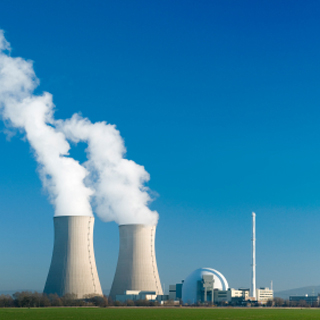
Will the nuclear power "renaissance" ever reach critical mass?
May 21, 2009 - David Biello - Scientific American
Despite an abundance of plans and applications, new nuclear reactors outside of Asia are few and far between, which puts nuclear's contribution to fighting greenhouse gas emissions at risk.
 |
NEW NUCLEAR: An MIT report cautions that nuclear power has not yet been effectively employed to cut back on greenhouse gas emissions--and time is running out.
© ISTOCKPHOTO.COM / HANS F. MEIER |
This month, Finland's Olkiluoto 3 nuclear reactor was supposed to begin generating power, a tangible sign of the revival of the nuclear industry outside of Asia after nearly 30 years of no new construction because of accidents, cost-overruns and other issues. Instead, the reactor won't be completed for more than three more years, its price is nearly 60 percent more than anticipated, and it is mired in costly legal squabbles between the builder, Areva, and the Finnish utility, Pohjolan Voima.
In the U.S., since 2003, 17 applications for 26 new reactors have been filed with the U.S. Nuclear Regulatory Commission, but not one is yet under construction.
Despite dozens of new nuclear plants ordered or built in Asia in recent years, "increased deployment of nuclear power has been slow both in the United States and globally," wrote the authors of a new Massachusetts Institute of Technology review of the state of nuclear power.
Those figures, say the authors of the report, an update on a similar report in 2003, mean that "even if all the announced plans for new nuclear power plant construction are realized, the total will be well behind that needed for reaching a thousand gigawatts of new capacity worldwide by 2050."
One thousand gigawatts is the number the M.I.T. professors estimated would be needed to ensure that nuclear power provided 20 percent of global electricity needs as well as cut emissions of greenhouse gases from power plants. In the U.S., the number would be jumping from 100 to 300 gigawatts of nuclear-sourced electricity by 2050.
After all, once operating, nuclear power plants burn nothing and therefore emit no carbon dioxide as fossil fuel–burning power plants do. (There are, of course, significant greenhouse gas emissions associated with building and fueling nuclear facilities).
But the price of new nuclear power has "escalated dramatically," according to the report, jumping by 15 percent a year to reach as much as $4,000 per kilowatt compared with $2,300 for coal-fired generation and just $850 for natural gas. And the industry is asking for at least $100 billion in federal tax subsidies and loan guarantees for the 26 reactors currently planned.
The situation is no better in Europe, according to Steven Thomas, a professor of energy studies at the University of Greenwich in London: Finland cannot complete its new reactor; the U.K. has yet to get started on any projects; and a new nuclear reactor in France, after 18 months of construction, is 20 percent overbudget and requires complete subsidy by the French government.
"The nuclear power industry in Europe is in the midst of the same kind of regulatory and financial uncertainty that makes the future of the industry murky at best in this country," Thomas said during a conference call with reporters. "We've been waiting for the renaissance for 10 years."
Nor has there been a solution to the issue of nuclear waste. In the U.S., the plan to use Yucca Mountain in the Nevada desert as a repository for spent nuclear fuel rods is in limbo, opposed by the Obama administration. Reprocessing nuclear fuel, currently underway only in France, has proved prohibitively expensive, and it raises concerns about the proliferation of plutonium for nuclear weapons.
"We do not believe a convincing case can be made on the basis of waste management considerations that the benefits of partitioning and transmutation [conversion of fuel into less radioactive form] will outweigh the attendant safety, environmental [and] security considerations, and economic costs," wrote the researchers, who included President Obama's now science advisor John Holdren, in 2003.
The update? "There is no basis to change that conclusion today," the professors, not including Holdren, wrote in the new report.
Ultimately, the M.I.T. authors warned, "if more is not done, nuclear power will diminish as a practical and timely option for deployment at a scale that would constitute a material contribution to climate change risk mitigation."
Adds Thomas: "It seems to me highly unlikely that [investing in nuclear power] is the most cost-effective way to reduce greenhouse gas emissions. Put that money in other sources, such as energy efficiency and renewables, and get a much better return on your money."

|

